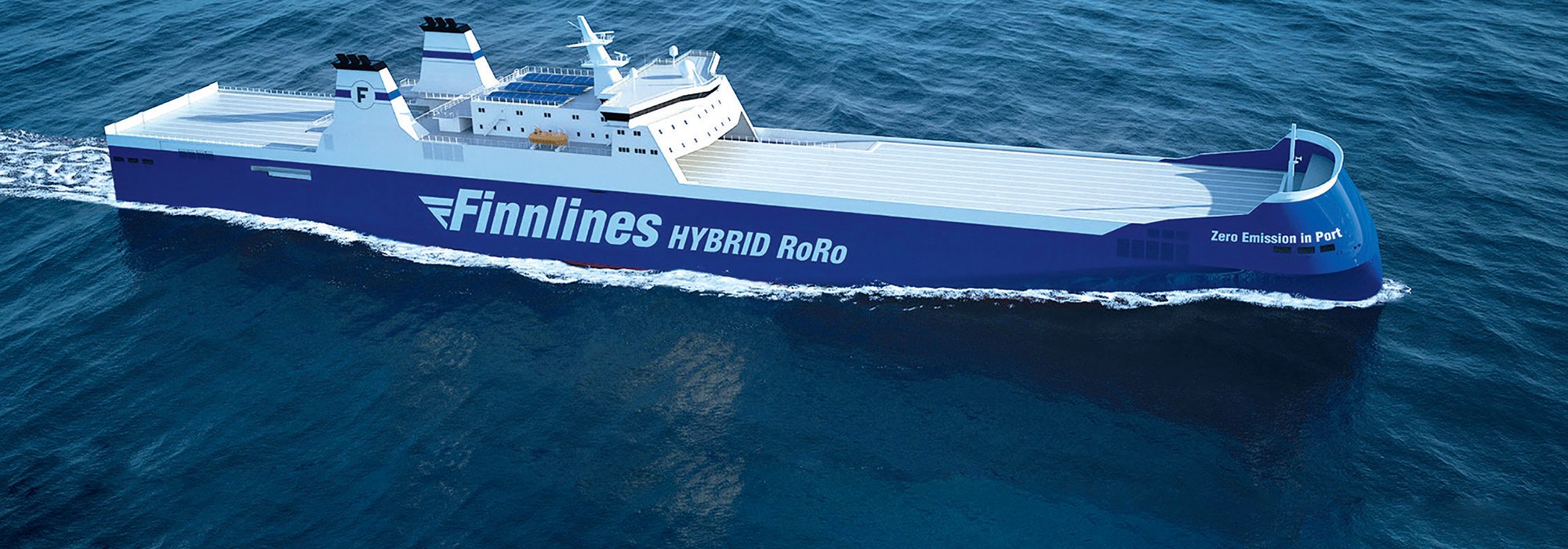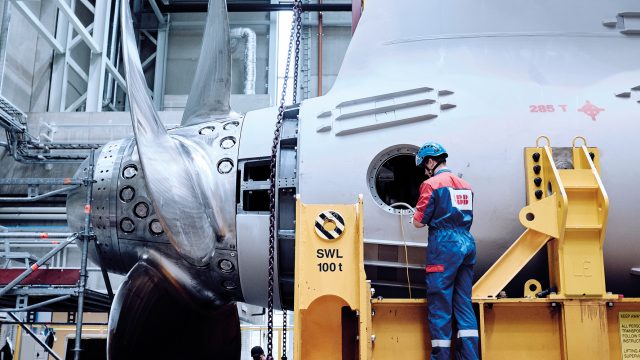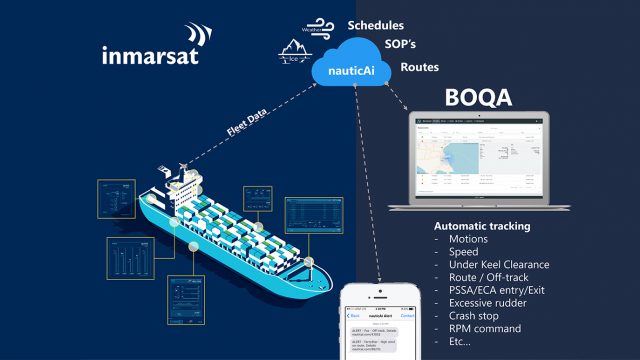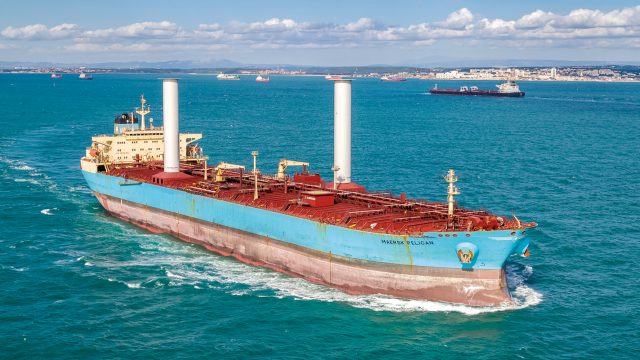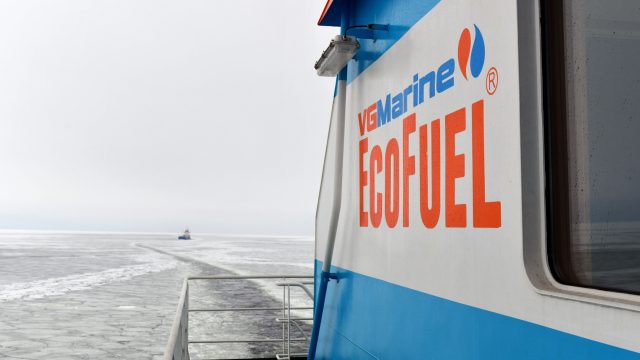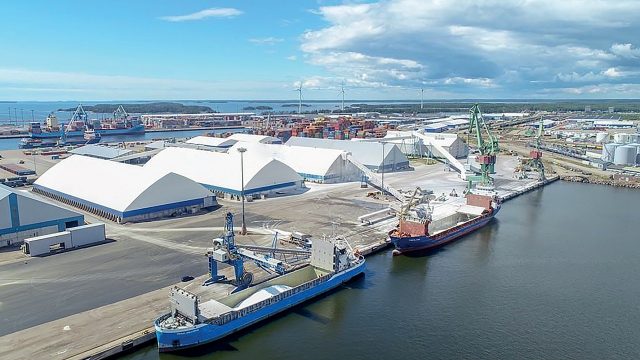One good example is m/s Aurora Botnia. This ropax vessel commissioned by Wasaline will be one of the most environmentally friendly vessels in its class.
The vessel’s four main engines will be supplied by Wärtsilä and will be able to run on both liquefied natural gas (LNG) and biogas. The vessel will use biogas produced in Vaasa from recycled materials, and also electrical shore power whilst in port.
This new build was commissioned by Kvarken Link, which is owned by the City of Vaasa and the City of Umeå. It is scheduled for completion in spring 2021. The vessel has a passenger capacity of 800 people and a cargo capacity of 1,500 lane metres for trucks.
Its construction will employ about 800 people for a year. The project is worth approximately EUR 120 million and the vessel is being built at RMC’s Rauma Shipyard.
Aurora Botnia will be the first passenger-car ferry in the world that is qualified to carry Clean Design notation. This is due to its hybrid system and electric azimuth thruster system, which is “quite unusual” in passenger-car ferries.
“RMC wants to provide its clients with cutting edge end-to-end solutions that harness the latest technology. To this end, we have launched R&D collaboration with Aalto University,” says Jyrki Heinimaa, President & CEO of Rauma Marine Constructions.
Viking Line trusts in clean gas
Viking Line’s new LNG ferry, Viking Glory, is currently being built in Xiamen, China. The vessel will start sailing between Turku, Åland and Stockholm in 2021. It will be equipped with many technical innovations to reduce emissions and climate impacts.
Thanks to advanced, innovative technological solutions, Viking Glory will be one of the world’s most climate-smart passenger ships. It is expected to use up to 10% less fuel than Viking Line’s smaller vessel Viking Grace, which was previously (2013) honored with the distinction of being the world’s most environmentally-friendly passenger ship.
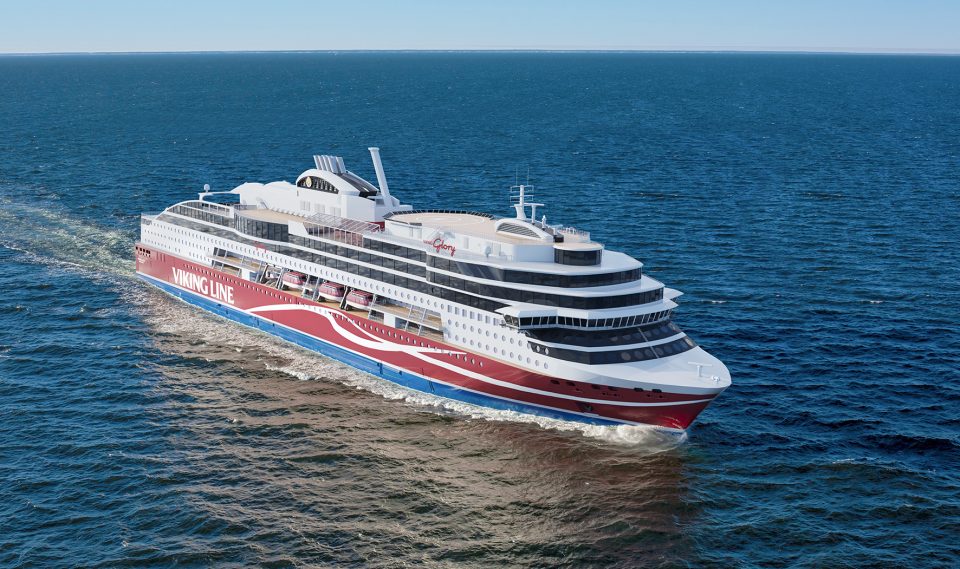
Viking Glory will use recovered heat from its engines to both heat the vessel and generate clean electricity. Viking Line will also become the first shipping company in the world to use steam turbines manufactured by the Swedish company Climeon in the recovery of waste heat from gases produced during the combustion process.
Viking Glory will be able to carry 2,800 passengers with a crew of a couple of hundred people. It will be 222.6 metres in length with a gross tonnage of 63,800 tons. The ferry will have an ice class of 1A Super and a cargo capacity of 1,500 lane metres.
Viking Glory’s sister ship – Viking Grace, which entered service in January 2013 – is the world’s first LNG passenger-car ferry. Viking Grace has already been bunkered a few thousand times in the Port of Stockholm.
Tallink Mystar – built and designed in Finland
TallinkSilja has commissioned a shuttle from RMC’s Rauma Shipyard to serve the Helsinki-Tallinn route. This new build will be Rauma Shipyard’s second largest ship to date, with a passenger capacity of 2,800 people and a vehicle capacity of 1,900 lane metres.
Thanks to cutting-edge technology and innovations, the Tallink Mystar ferry will be both environmentally friendly and energy-efficient. It will use a dual-fuel solution with the option to use liquefied natural gas (LNG) as the second fuel. The ferry will be delivered to Tallink in early 2022.
The Deltamarin design agency will supply the basic design and production plan for the ship’s hull, machinery and electrical systems. The agreement made with RMC is worth about EUR 7.5 million and the work is estimated to take 16–18 months. Deltamarin will handle design work online through its Finnish and Polish offices.
Five new ships for Finnlines
The shipping company Finnlines’ ongoing half-billion euro investment programme includes three green hybrid ro-ro vessels as well as two eco-friendly Superstar ro-pax ships. The ro-ro vessels are expected to be delivered during 2021–2022 and the Superstar ro-pax vessels are set to start in traffic in 2023. “Finnlines has invested considerably in energy efficiency and green technologies during the past years. Our significant EUR 500 million investment programme will further increase Finnlines’ energy efficiency and emission reduction as well as it will provide perfect tools to respond future customer needs,” says Finnlines’ CFO Tom Pippingsköld.
The hybrid ro-ro’s will be 238 metres long with a ro-ro cargo capacity of some 5,800 lane metres. The weather deck will have a container capacity of about 520 twenty-foot equivalent units. The vessels will be able to flexibly handle a variety of ro-ro cargos, e.g. some 5,800 m2 can be dedicated for efficient carriage of cars by hoistable car decks.
The lower hold and main deck have been designed for the efficient loading and unloading of paper sto-ro cargo in addition to ro-ro units. One ship will be able to transport a maximum of 17,400 tons of cargo.
“The ro-ro vessels’ will be fitted with hybrid power system. The deliveries will include approximately 5,000 kWh battery systems that will enable the vessels to operate emission-free while in port. In addition to lithium-ion batteries we will also be supplying our vessels with the other parts of a DC-Link integration package. These consists of shaft generators, a DC-switchboard and converters, energy and power management systems and an integrated automation system,” says Finnlines’ Mikael Lindholm, Head of the Newbuilding Department.
The vessels will be equipped with two-stroke energy efficient engines. “Thanks to all the smart technology these new vessels will be among the most environmentally friendly ships of their type in the Baltic Sea,” he adds.
Two of the ordered three vessels are now under construction as the first vessel had its steel cutting in early summer and the second vessel in autumn. The new hybrid ro-ro vessels will be named Finneco I, Finneco II and Finneco III in honour of the green innovations.
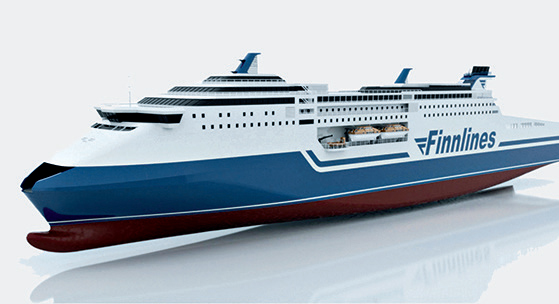
Finnlines Superstar ro-pax vessels are especially designed for the company’s Finland-Sweden traffic. The vessels will serve the Naantali-Kapellskär route with a passenger capacity of 1,100 people and a cargo capacity of 5,100 lane metres. The air lubrication system located beneath the keel creates a field of air bubbles between the vessel bottom and water to reduce friction, that is, the hull’s hydrodynamic resistance.
This solution reduces fuel consumption and cuts emissions. Automooring at berth will ensure faster mooring. This timesaving gives lower average speed at sea. “Superstar ro-pax vessels will be fitted with shore connection and lithium-ion batteries. The batteries will be charged during port stay and their energy is used at sea instead of that from generators. Emissions will be reduced respectively. The shore connection will also make port calls practically emission-free,” says Mikael Lindholm.
“These new vessels will modernize our fleet further and thereby reduce the environmental impact and emissions,” Tom Pippingsköld adds.
UPM’s logistics slot into place
Forestry company UPM is streamlining its logistics chain and time chartering seven new LNG vessels from the Dutch Spliethoff Group. Of the seven ships being built in China, three are bound for the Finnish shipping company Bore and four for the Dutch shipping company Wijnne Barends. As the shipper, UPM has been involved in designing the vessels from the outset.
Lauri Rikala, UPM Logistics’ Director of Global Break Bulk Shipping, says that the Spliethoff agreement will safeguard sustainable, competitive and reliable shipping solutions for forestry sector businesses and customers for a long time into the future.
All seven new builds will be fuelled by cleaner liquefied natural gas (LNG). The vessels will enter service in 2021–2022.
“The use of LNG will reduce carbon-dioxide emissions by a fourth compared to other maritime fuels.
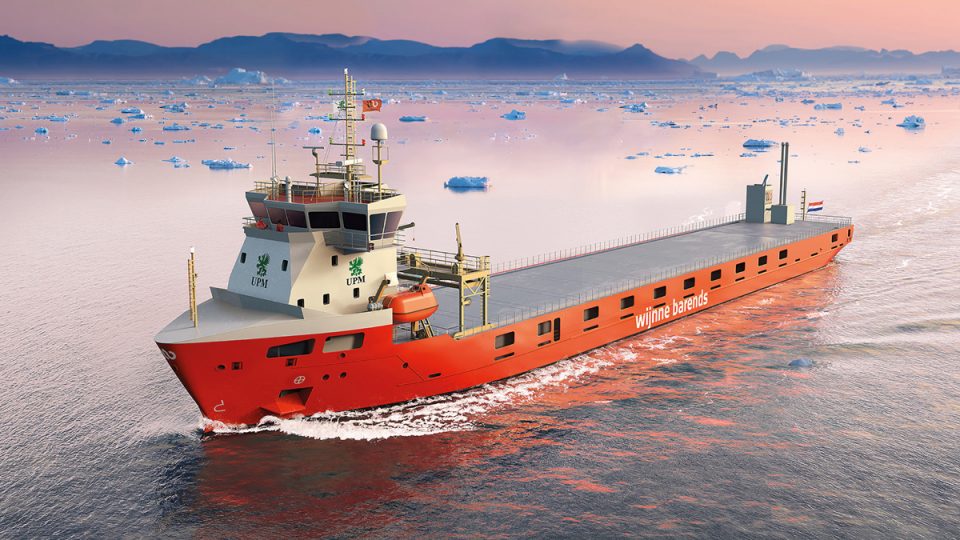
Nitrogen oxides will fall by 85 per cent and sulphur oxides to almost zero. Particulate emissions will also be lowered to around zero,” says Rikala, assessing the impact of the sustainable fuel solutions.
“The Port of Rauma in Finland remains by far the largest gateway for UPM’s exports. Next is the Port of HaminaKotka, with Pietarsaari coming in third,” says Rikala, describing the arrangements at the head of UPM’s logistics chain.
Neste to replace two aframax tankers
The energy company Neste Oyj has ordered two aframax vessels from South Korea as new builds.
However, the purchase of the vessels for approximately 140 million dollars does not signal that Neste intends to return to the tanker business. According to Ilkka Iittiläinen (Vice President, Logistics), these are replacement investments for the aging m/t Mastera and m/t Stena Arctica.
Neste’s new aframax tankers are currently being built by the South Korean shipyard HHI (Hyundai Heavy Industries). They will be 250 metres long with an ice class of 1A and a deadweight tonnage of 112,000 tons. Once completed in 2021, they will handle Finland’s crude old deliveries from Primorsky Krai and Ust-Luga to Neste’s refineries.
As is the fashion, Neste has also considered a variety of fuels to power its new ships. According to Iittiläinen, the new aframax’s engines can be converted to run on LNG if the situation demands.
“When considering engine and fuel alternatives, we focused on energy efficiency, while taking into account the fact that tankers often operate on short routes in the Gulf of Finland, which makes loading and unloading times significant,” says Iittiläinen.
Neste Oyj reorganised its shipping business in 2013–2014. In conjunction with this restructuring, most of its vessels were sold to a company owned by the Finnish National Emergency Supply Agency and the insurance company Ilmarinen.
After the transaction, Neste time chartered vessels for its own use.
“We currently have about a dozen vessels, including tugboats,” says Iittiläinen, ending his short history of the former Neste Shipping, which was once Finland’s largest shipping company in terms of tonnage.

